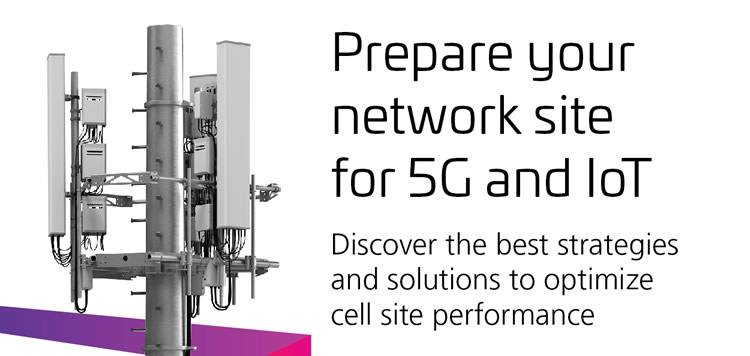Michelle Donegan is a tech writer who has covered the communications industry for more than 25 years on both sides of the pond. Having worked for various industry titles, including Communications Week International, Total Telecom and Light Reading, she specializes in mobile network technology trends.
Predicting traffic demands is one of the most difficult and important challenges that mobile network operators face. If mobile network capacity can’t keep up with demand, then operators risk disappointing subscribers with poor quality services. But if networks are over-provisioned with too much capacity, then operators risk increasing costs without reaping additional service revenue. Finding the right balance is a science.
Capacity planning is top of mind for mobile operators as 4G networks mature and nascent 5G networks get up and running. A recently published ebook, “Site Solutions for Techies,” from wireless infrastructure specialist CommScope provides a timely guide to strategies for improving network capacity along with corresponding radiofrequency (RF) component products.
Reports such as Cisco’s Visual Networking Index Forecast and Ericsson’s latest Mobility Report indicate ever-increasing mobile data traffic over the next five years. According to Cisco’s latest VNI for mobile data traffic, by 2022, mobile will account for 20% of all IP traffic and monthly mobile data will reach 77 exabytes. The report also forecasts that 5G connections are expected to generate 2.6 times more traffic than average 4G connections by 2022. By that time, 5G will represent 3.4 percent of connections and 11.8 percent of all mobile traffic.
Site preparation
To prepare cell sites to cope with heavier traffic burdens, operators have three options, according to CommScope: increase number of cell sites, improve spectral efficiency and make use of additional bandwidth.
- Cell Site Densification: By adding more cells per square kilometre, there are more channels available and higher capacity. As CommScope explains, traditionally this has been achieved by adding new macro cell sites. But too many sites that are located close together can cause interference issues.
Alternatively, operators can implement what’s called High-order sectorization (HoS) that uses multiple antenna arrays and combiners to split typical three-sector cell sites into six sectors. This technique provides twice the frequency reuse and enables densification without building a new macro site.
Another way to densify the network is to deploy outdoor small cells to provide additional capacity.
- Spectral Efficiency Improvements: Spectral efficiency is a measure of how much throughput can be gotten out of each spectrum hertz, usually expressed as Mbps/Hz. Operators can improve spectral efficiency by reducing signal interference. Two ways this can be achieved is by employing high-performance base station antennas and 4x4 MIMO.
- Use More Available Spectrum: While this may seem like a simple solution, it’s not an easy one. Spectrum is scarce and operators have a finite amount of frequencies to work with, which is why it is imperative to make the best use of this resource. Operators can add more spectrum when it becomes available, such as through national spectrum auctions. They can also improve capacity by offloading traffic to unlicensed frequencies, such as those used by Wi-Fi. Also, wider band frequencies (up to 200 MHz wide) are becoming available that operators can leverage by deploying ultra-wideband antennas.
50% off Lyca Mobile’s Pay As You Go plans
Lyca Mobile’s cheap Pay As You Go deals include roaming and international minutes.










